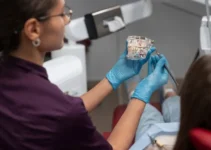PND dyspnoea, or paroxysmal nocturnal dyspnea, is a concerning condition characterized by sudden, severe shortness of breath that often occurs at night, waking individuals from sleep. This symptom may indicate underlying health issues, particularly related to the heart, such as congestive heart failure. It occurs as the heart struggles to pump efficiently, leading to fluid buildup in the lungs. Understanding the triggers and treatment options for PND dyspnoea is crucial for those experiencing these alarming symptoms, as timely medical intervention can significantly improve quality of life and prevent further complications.
Understanding PND Dyspnoea
Paroxysmal Nocturnal Dyspnoea (PND) is a condition characterized by sudden, severe shortness of breath at night that awakens a person from sleep. It is a symptom that can be quite distressing and is often associated with underlying heart or lung conditions. Understanding the mechanisms, causes, and implications of PND dyspnoea is crucial for effective diagnosis and treatment.
PND dyspnoea often indicates a serious cardiovascular or respiratory issue, making it essential for patients experiencing this symptom to seek medical attention promptly. Addressing PND dyspnoea not only improves the quality of life but also prevents potential complications that could arise from its underlying causes. This article will delve into the basics of PND dyspnoea, its causes, and the importance of seeking treatment.
What is PND Dyspnoea?
PND dyspnoea refers to the sudden onset of severe difficulty in breathing that typically occurs at night. Patients often wake up gasping for air, and this can be associated with coughing or a feeling of choking. This symptom can last for a few minutes to a couple of hours and is usually relieved by sitting upright or standing.
This nocturnal breathlessness is often a result of fluid accumulating in the lungs due to lying flat, which exacerbates conditions like heart failure. When in a horizontal position, fluid redistribution occurs, leading to pulmonary congestion and causing the sudden breathlessness characteristic of PND.
Key signs of PND dyspnoea include:
- Sudden awakening with a sensation of choking or breathlessness
- Relief upon sitting or standing
- Associated symptoms such as cough, wheezing, or a feeling of tightness in the chest
While PND dyspnoea is primarily linked to heart failure, it can also be associated with other conditions like chronic obstructive pulmonary disease (COPD) or severe asthma, indicating a broader range of potential underlying issues.
Causes of PND Dyspnoea
The primary cause of PND dyspnoea is heart failure. In heart failure, the heart’s ability to pump blood efficiently is compromised. This inefficiency leads to the accumulation of fluid in the lungs when lying down, causing the breathlessness attack. Common heart-related causes include left ventricular dysfunction and congestive heart failure. Other cardiovascular causes can include:
- Cardiomyopathy
- Hypertension
- Coronary artery disease
Beyond cardiovascular issues, respiratory conditions such as COPD, asthma, and pulmonary embolism can also lead to PND dyspnoea. These conditions may impair lung function and lead to similar symptoms of nocturnal shortness of breath.
It’s also important to consider obesity and sleep apnea as they can exacerbate or mimic the symptoms of PND dyspnoea. In sleep apnea, the intermittent cessation of breathing during sleep can cause sudden awakenings and should be differentiated from PND.
Overall, identifying the root cause of PND dyspnoea is crucial for effective treatment and management. If you’re interested in learning more about other symptoms or related conditions, be sure to explore our other comprehensive articles.
Symptoms and Diagnosis
Understanding the symptoms and diagnosis of dental issues is crucial for early intervention and effective treatment. Early detection can significantly improve the outcomes of dental procedures, including implantology and bone regeneration. Patients should be aware of the signals their body sends and seek professional help promptly to prevent further complications. This section will delve into the common symptoms, when to see a doctor, and the diagnostic tests involved in the process.
Symptoms related to dental problems can manifest in various forms, ranging from mild discomfort to debilitating pain. Regular dental check-ups and maintaining open communication with your dentist are essential for identifying and addressing these issues early. The following subsections will provide a comprehensive overview of what you should look out for and the steps involved in diagnosing dental conditions.
Common Symptoms
Dental problems often present a variety of symptoms that can serve as warning signs. Among the most common are:
- Persistent pain in the teeth or gums
- Swelling in the gums or jaw
- Bleeding gums, especially after brushing or flossing
- Bad breath that doesn’t go away with regular oral hygiene
- Loose teeth or a change in the way your teeth fit together when you bite
These symptoms can indicate a range of issues, from gum disease to tooth decay or more serious conditions such as infections. It is important not to ignore these signs, as they can worsen over time and lead to more significant dental and overall health problems.
When to See a Doctor
It can be challenging to determine when a dental problem requires professional attention. However, there are specific instances when it is imperative to see a dentist:
- If you experience severe, persistent pain that interferes with daily activities
- When you notice swelling or redness in the gums that doesn’t improve
- In cases of tooth loss or teeth that have become increasingly loose
- If you observe pus or signs of infection around the gums or teeth
- When you suffer from frequent headaches or jaw pain
Early intervention can help prevent the progression of dental diseases and potentially save you from more invasive treatments in the future. Don’t hesitate to schedule an appointment if you’re unsure about your symptoms.
Diagnostic Tests
Once you’ve decided to seek professional help, your dentist will perform a series of diagnostic tests to determine the underlying cause of your symptoms. These tests may include:
- Visual Examination: The dentist will inspect your mouth, teeth, and gums for signs of decay, infection, or other issues.
- X-rays: These images help identify problems not visible to the naked eye, such as bone loss, impacted teeth, or deep cavities.
- Periodontal Probing: This test measures the depth of the gum pockets to assess the health of your gums and detect gum disease.
- Dental Impressions: These are used to create a model of your teeth and gums, which can help in planning treatments like implants or orthodontics.
These diagnostic tools are essential for creating a comprehensive treatment plan tailored to your specific needs. By identifying the root cause of your dental issues, your dentist can recommend the most effective course of action to restore your oral health.
Understanding the symptoms and diagnostic procedures involved in dental care is the first step toward proactive and effective treatment. Knowing what to look out for and when to seek help can make all the difference in maintaining a healthy mouth. For more insights on dental care and the latest advancements in implantology and bone regeneration, be sure to explore our other informative articles.
Treatment and Management
When it comes to treatment and management of dental conditions, a multifaceted approach is often necessary. This includes not only medical interventions but also important lifestyle changes and preventive measures. Let’s delve into the various aspects that constitute a comprehensive treatment plan.
Effective management of dental conditions requires thorough assessment and diagnosis followed by tailored treatments. This holistic approach not only alleviates symptoms but also addresses underlying causes, ensuring long-term oral health.
Medications
Medications play a crucial role in the treatment of dental conditions. For instance, antibiotics may be prescribed to combat bacterial infections associated with dental abscesses. Common antibiotics include amoxicillin and clindamycin.
Pain management is another area where medications are vital. Analgesics such as ibuprofen or acetaminophen are often recommended to alleviate pain and reduce inflammation. For more severe pain, dentists may prescribe stronger medications.
In cases of periodontal disease, antimicrobial mouth rinses and topical antibiotics might be used to reduce harmful bacteria in the mouth. These medications help in managing the condition effectively and preventing further damage.
Lifestyle Changes
Implementing certain lifestyle changes can significantly impact oral health. For example, quitting smoking is essential as tobacco use is linked to a multitude of dental problems, including gum disease and oral cancer.
Dietary adjustments are another crucial aspect. Consuming a balanced diet rich in vitamins and minerals can enhance oral health. Foods high in calcium and phosphorous, such as dairy products and leafy greens, are particularly beneficial. Stress management also plays a role in maintaining good oral health. High-stress levels can lead to conditions such as bruxism (teeth grinding) and temporomandibular joint disorders (TMD). Practices such as regular exercise, meditation, and adequate sleep can mitigate these risks.
Preventive Measures
Preventive measures are fundamental in maintaining long-term oral health. Regular dental check-ups are paramount. Visiting your dentist every six months allows for early detection and treatment of potential issues before they escalate.
Maintaining a rigorous daily oral hygiene routine is another preventive measure. This includes brushing teeth at least twice a day with fluoride toothpaste and flossing daily to remove plaque and food particles between teeth.
Sealants and fluoride treatments are additional preventive strategies. Dental sealants provide an extra protective layer on the teeth, while fluoride treatments help in reinforcing the enamel, making it more resistant to decay.
By integrating these medications, lifestyle changes, and preventive measures into your routine, you can effectively manage and minimize dental problems. For more in-depth information on oral health, consider exploring our other articles.
Common Questions About PND Dyspnoea
If you’re seeking to better understand PND dyspnoea and its impact on nighttime breathing, here are some common questions answered.
What exactly is PND dyspnoea and why does it occur at night?
PND dyspnoea, or paroxysmal nocturnal dyspnea, is a condition characterized by sudden and severe shortness of breath that typically occurs at night during sleep. This condition is commonly associated with heart failure, where the heart is unable to pump efficiently causing fluid to back up in the lungs. This accumulation of fluid can lead to difficulty breathing, especially when lying down due to increased pressure in the chest and lungs.

My name is Salman Kapa, a 73-year-old expert in bone regeneration and dental implantology. With decades of experience in the field, I am dedicated to advancing our understanding of oral health and hygiene. Through my research and writing, I aim to contribute to the development of innovative solutions in dental care.




